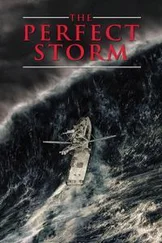Sebastian Junger - War
Здесь есть возможность читать онлайн «Sebastian Junger - War» — ознакомительный отрывок электронной книги совершенно бесплатно, а после прочтения отрывка купить полную версию. В некоторых случаях можно слушать аудио, скачать через торрент в формате fb2 и присутствует краткое содержание. Город: New York, Год выпуска: 2010, ISBN: 2010, Издательство: Twelve, Жанр: Публицистика, nonf_military, на английском языке. Описание произведения, (предисловие) а так же отзывы посетителей доступны на портале библиотеки ЛибКат.
- Название:War
- Автор:
- Издательство:Twelve
- Жанр:
- Год:2010
- Город:New York
- ISBN:978-0-446-56976-7
- Рейтинг книги:5 / 5. Голосов: 1
-
Избранное:Добавить в избранное
- Отзывы:
-
Ваша оценка:
- 100
- 1
- 2
- 3
- 4
- 5
War: краткое содержание, описание и аннотация
Предлагаем к чтению аннотацию, описание, краткое содержание или предисловие (зависит от того, что написал сам автор книги «War»). Если вы не нашли необходимую информацию о книге — напишите в комментариях, мы постараемся отыскать её.
, Sebastian Junger (
) turns his brilliant and empathetic eye to the reality of combat—the fear, the honor, and the trust among men in an extreme situation whose survival depends on their absolute commitment to one another. His on-the-ground account follows a single platoon through a 15-month tour of duty in the most dangerous outpost in Afghanistan’s Korengal Valley. Through the experiences of these young men at war, he shows what it means to fight, to serve, and to face down mortal danger on a daily basis.
War — читать онлайн ознакомительный отрывок
Ниже представлен текст книги, разбитый по страницам. Система сохранения места последней прочитанной страницы, позволяет с удобством читать онлайн бесплатно книгу «War», без необходимости каждый раз заново искать на чём Вы остановились. Поставьте закладку, и сможете в любой момент перейти на страницу, на которой закончили чтение.
Интервал:
Закладка:
The U.S. military tends to divide problems into conceptual slices and then tackle each slice separately. Wars are fought on physical terrain — deserts, mountains, etc. — as well as on what they call “human terrain.” Human terrain is essentially the social aspect of war, in all its messy and contradictory forms. The ability to navigate human terrain gives you better intelligence, better bomb-targeting data, and access to what is essentially a public relations campaign for the allegiance of the populace. The Taliban burned down a school in the Korengal, for example, and by accident also burned a box full of Korans. The villagers were outraged, and the Taliban lost a minor battle in the human terrain of the valley.
You can occupy a “hilltop” in human terrain much like you can in real terrain — hiring locals to work for you, for example — and that hilltop position may protect you from certain kinds of attack while exposing you to others. Human terrain and physical terrain interact in such complex ways that commanders have a hard time calculating the effect of their actions more than a few moves out. You can dominate the physical terrain by putting an outpost in a village, but if the presence of foreign men means that local women can’t walk down certain paths to get to their fields in the morning, you have lost a small battle in the human terrain. Sometimes it’s worth it, sometimes it isn’t. Accidentally killing civilians is a sure way of losing the human terrain — this applies to both sides — and if you do that too many times, the locals will drive you out no matter how many hilltops you occupy. It has been suggested that one Taliban strategy is to lure NATO forces into accidentally killing so many civilians that they lose the fight for the human terrain. The physical terrain would inevitably follow.
The U.S. military depicts the human terrain with genealogical data and flowcharts of economic activity and maps of tribal or clan affiliation. That information is overlaid onto extremely detailed maps of the physical terrain, and a plan is developed to dominate both. Maps of the physical terrain are rendered from satellite data and show vegetation, population centers, and elevation contours. Superimposed on the maps is a one-kilometer grid, and the military measures progress on the physical terrain by what gridline they’ve gotten to. The Korengal Valley is ten kilometers long and ten kilometers wide — about half the size of Staten Island — and military control ends at Kilometer Sixty-two. The six-two gridline, as it is known, bisects the valley at Aliabad; north of there you’re more or less safe, south of there you’re almost guaranteed to get shot at. It’s as if the enemy thought that the Americans would go for a de facto division of the valley, and that if they stayed out of the northern half, maybe the Americans would stay out of the south. They didn’t.
The other major division is lengthwise, with the enemy more or less controlling the eastern side of the valley and the Americans controlling the west. The Americans, in other words, control about one-quarter of the Korengal. The six-two crosses the valley and climbs eastward right up the Abas Ghar, but if you follow it there with anything less than two platoons and dedicated air assets you risk getting shot to pieces. What the military calls “ratlines” — foot trails used by the enemy to bring in men and supplies — run eastward from the Abas Ghar through the Shuryak Valley to the Kunar, and then across the border to Pakistan. More ratlines run south into the Chowkay and north across the Pech. In the Korengal there is a high degree of correspondence between American control of the human terrain and control of the physical terrain. It’s hard to control one without controlling the other. When the Americans gain access to a community and start delivering development projects, the locals tend to gravitate toward them and away from the insurgents. Entering a village requires a large military presence, however, and that offers a perfect target to insurgent gunners in the hills. Locals invariably blame the ensuing firefight on the Americans, regardless of who shot first.
Around the time Vimoto was killed, Third Platoon soldiers in the northern end of the valley shot into a truck full of young men who had refused to stop at a checkpoint, killing several. The soldiers said they thought they were about to be attacked; the survivors said they had been confused about what to do. Faced with the prospect of losing the tenuous support that American forces had earned in the northern half of the valley, the battalion commander arranged to address community leaders in person after the incident. Standing in the shade of some trees by the banks of the fast, violent Pech, Lieutenant Colonel William Ostlund explained that the deaths were the result of a tragic mistake and that he would do everything in his power to make it right. That included financial compensation for the grieving families. After several indignant speeches by various elders, one very old man stood up and spoke to the villagers around him.
“The Koran offers us two choices, revenge and forgiveness,” he said. “But the Koran says that forgiveness is better, so we will forgive. We understand that it was a mistake, so we will forgive. The Americans are building schools and roads, and because of this, we will forgive.”
The American rules of engagement generally forbid soldiers to target a house unless someone is shooting from it, and discourage them from targeting anything if civilians are nearby. They can shoot people who are shooting at them and they can shoot people who are carrying a weapon or a handheld radio. The Taliban know this and leave everything they need hidden in the hills; when they want to launch an attack they just walk out to their firing positions empty-handed and pick up their guns. They also make children stand near them when they use their radios. The Americans don’t dare shoot because, other than the obvious moral issues involved, killing civilians simply makes the war harder. The Soviet military, which invaded Afghanistan in 1979, most emphatically did not understand this. They came in with a massive, heavily armored force, moved about in huge convoys, and bombed everything that moved. It was a textbook demonstration of exactly how not to fight an insurgency, and 7 percent of the prewar population was killed. A truly popular uprising eventually drove the Soviets out.
The Korengalis are originally from Nuristan, an enclave of mostly Persian- and Pashai-speaking tribesmen who practiced shamanism and believed that the rocks and trees and rivers around them had souls. The Nuristanis didn’t convert to Islam until the armies of King Abdur Rahman Khan marched in and forced them to around 1896. The people who are now known as the Korengalis settled in their present location around the time of the great conversion, bringing with them both their newfound Islamic faith and their wild, clannish ways. They terraced the steep slopes of the valley into wheat fields and built stone houses that could withstand earthquakes (and, it turned out, 500-pound bombs) and set about cutting down the cedar forests of the upper ridges. The men dye their beards red and use kohl around their eyes, and the women go unveiled and wear colorful dresses that make them look like tropical birds in the fields. Most Korengalis have never left their village and have almost no understanding of the world beyond the mouth of the valley. That makes it a perfect place in which to base an insurgency dedicated to fighting outsiders. One old man in the valley thought the American soldiers were actually Russians who had simply stayed after the Soviet army pulled out in 1989.
The people aren’t the only problem, however; the war also diverged from the textbooks because it was fought in such axle-breaking, helicopter-crashing, spirit-killing, mind-bending terrain that few military plans survive intact for even an hour. The mountains are sedimentary rock that was compressed into schist hundreds of millions of years ago and then thrust upward. Intrusions of hard white granite run though the schist like the ribs on an animal carcass. Even the trees are hard: knotted holly oaks with spiny leaves and branches that snag your clothing and won’t let go. Holly forests extend up to around eight thousand feet and then give over to cedar trees that are so enormous, the mind compensates for their size by imagining them to be much closer than they are. A hilltop that looks a few hundred yards away can be a mile or more.
Читать дальшеИнтервал:
Закладка:
Похожие книги на «War»
Представляем Вашему вниманию похожие книги на «War» списком для выбора. Мы отобрали схожую по названию и смыслу литературу в надежде предоставить читателям больше вариантов отыскать новые, интересные, ещё непрочитанные произведения.
Обсуждение, отзывы о книге «War» и просто собственные мнения читателей. Оставьте ваши комментарии, напишите, что Вы думаете о произведении, его смысле или главных героях. Укажите что конкретно понравилось, а что нет, и почему Вы так считаете.












